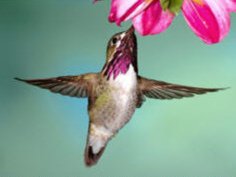It is amazing the things that one can discover while doing research on the subject of hummingbirds. The topic of today’s post is certainly no different. While recently researching a wide variety of topics about hummingbirds, I discovered that a plant known as Common Burdock can be seen as an danger to hummingbirds. This discovery was not only surprising but also fascinating to me, as I am sure it would have been to my mother as well, so I decided to share this information with you my readers as well. This post will discuss what I uncovered about this fascinating topic.
Yes, it is true that hummingbirds are very dependent on a wide variety of plants as a valuable source of nectar and this post is not intended to dispute this but to point out that the Common Burdock is a plant which has the potential to cause harm to the hummingbird.
According to Mr. Bill Hilton of Operation Ruby Throat: The Hummingbird Project, hummingbirds have become impaled on cactus spines and also trapped due to sticky tree sap. Also, the seed pods of the Common Burdock have been well documented as a hazard of the hummingbird. The pods are known as “cockleburs” which are covered by tiny hooks that can attach to the fur or pant legs of potential seed disseminators. Due to the hummingbird’s tiny size the bird can become sired by the hooks of the “cockleburs” when they come to feed on a purple burdock flower.
I am not claiming that the Common Burdock is grave hazard to a hummingbird, just pointing out that it is a highly unusual one. I find it very interesting to know that a plant can be a hazard to a hummingbird and I wanted to share this will my readers.
On a positive note, it is possible for a hummingbird to be rescued if this occurs, but the bird has to be found in time and the person who finds the bird must know how to help the bird without causing it harm. Operation Ruby Throat: The Hummingbird Project was successfully able to rescue a female Ruby Throat found in West Virginia by cutting the hooks away from its legs and then banding the bird prior to setting the bird free once more.
